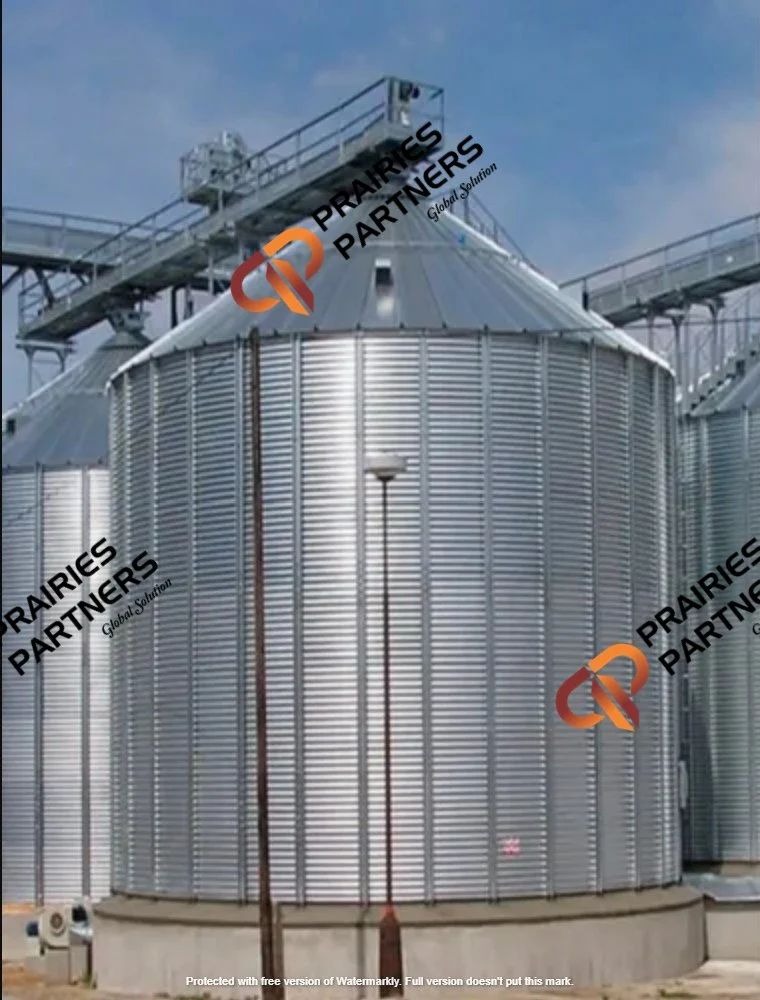Grain Wheat Storage Tank Manufacturers
A grain wheat storage tank, often referred to as a grain wheat silo or simply a wheat silo, is a specialized structure designed for the bulk storage of wheat after harvest. These tanks are crucial in agricultural and food processing contexts to preserve wheat quality and manage supply chain logistics effectively. Here are the key features and aspects typically associated with grain wheat storage tanks:
Grain Handling System manufacturer

Material and Construction:
- Materials: Grain wheat storage tanks are commonly constructed from galvanized steel, concrete, or occasionally from other materials like fiberglass, depending on the specific requirements and environmental conditions.
- Design: They are designed to be robust and durable, capable of withstanding the weight of stored wheat and environmental stresses such as wind and temperature changes.
Capacity:
- Size: Wheat storage tanks come in various sizes, ranging from small-scale units suitable for farms to large industrial silos that can hold thousands of metric tons of wheat.
- Capacity: The capacity of a wheat storage tank can vary widely based on the intended use, ranging from several hundred bushels to tens of thousands of bushels.
Preservation of Wheat Quality:
- Airtight and Ventilation Systems: Grain wheat silos are equipped with airtight seals and sometimes include ventilation systems to regulate temperature and humidity levels inside the silo.
- Protection from Pests: Measures such as insect screens and rodent-proofing are employed to prevent pests from accessing the stored wheat, ensuring its quality remains uncompromised.
Loading and Unloading:
- Efficient Handling: Wheat storage tanks are designed for efficient loading and unloading processes. This may involve mechanical systems such as conveyor belts, augers, or pneumatic systems to move wheat into and out of the silo.
- Minimization of Damage: Care is taken during loading and unloading to minimize physical damage to the wheat kernels, which could affect quality and market value.
Safety and Hygiene:
- Cleanliness: Grain wheat silos are designed with smooth interior surfaces that are easy to clean, helping to maintain hygiene standards.
- Safety Features: Depending on the size and location, safety features such as ladders, platforms, and safety rails are often incorporated to ensure safe access for maintenance and inspection.
Integration with Grain Handling Systems:
- Connectivity: In larger grain handling operations, wheat storage tanks are often integrated with other equipment such as conveyors, grain cleaners, and dryers to facilitate efficient grain handling and processing.
- Automation: Modern wheat silos may feature automated monitoring and control systems to optimize storage conditions and ensure timely management of inventory.
Environmental Considerations:
- Environmental Impact: Silos are designed to minimize environmental impact, with features that reduce dust emissions and prevent spillage during loading and unloading operations.
- Compliance: They adhere to environmental regulations regarding storage and handling of agricultural commodities.
In summary, grain wheat storage tanks are essential infrastructure in the agricultural supply chain, providing secure and efficient storage for wheat from harvest to consumption or processing. Their design features ensure wheat quality is preserved, operational efficiency is maximized, and safety standards are maintained throughout the storage process.
